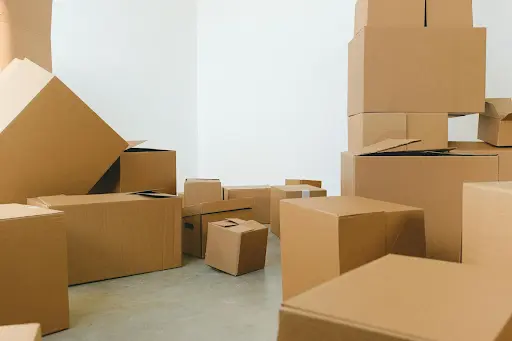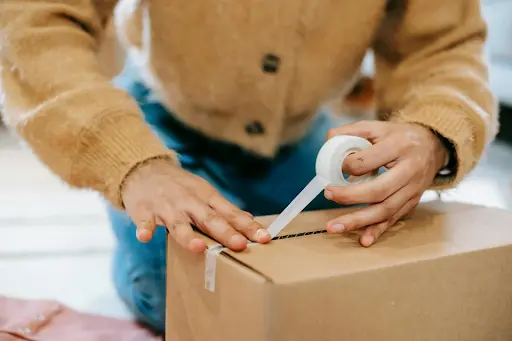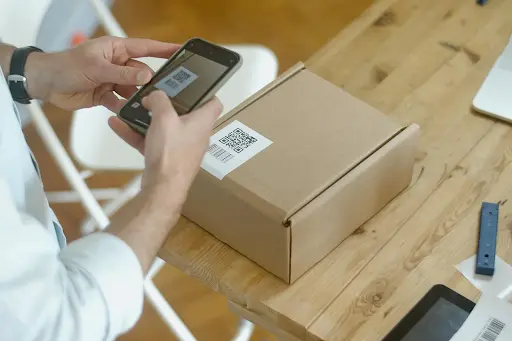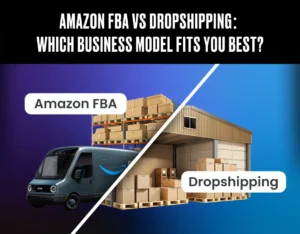Selling on Amazon FBA can greatly benefit your business, especially when you are offering products sold and shipped directly by Amazon that customers tend to trust more. But box size limits can cause delays and extra fees. If you send a box that is too large, Amazon may reject your entire shipment. To keep your inventory moving smoothly, it’s essential to know Amazon box sizes, limits, and requirements.
As of 2025, the biggest box size allowed is 25 inches on each side, with a weight limit of 50 lbs per box (30 lbs for standard-size items). Going over these limits can result in extra charges, shipment refusals, or penalties for your account.
In this guide, we will explain Amazon’s packaging rules, weight limits, and requirements. We’ll also share tips to help you stay compliant and avoid costly mistakes.
Part 1: Amazon FBA Box Size Limits: What Are the Rules?
For standard-sized items, Amazon FBA box size limits are 25 inches on any side and 50 pounds in weight. However, if you’re shipping oversized items, the box can exceed these limits, but you’ll need to ensure it’s properly labeled and packaged.
Amazon FBA Box Size & Weight Limits
| Box Type | Maximum Dimensions | Maximum Weight |
| Standard-Sized Box | 25 inches (length, width, height) | 50 lbs (22.5 kg) |
| Oversized Box | Exceeds 25 inches on one side | Can exceed 50 lbs, must be labeled accordingly |
Standard-Sized Items:
- Maximum Dimensions: 25 inches on any side (length, width, or height).
- Maximum Weight: 50 pounds.
Oversized Items:
- Exceeding Limits: If your product is oversized, you can ship it in a box that exceeds the 25-inch and 50-pound limits, but ensure the box is properly labeled and packaged.
- Labeling: Use “Heavy Package” labels for boxes weighing between 15 kg – 23 kg, or for single oversized items exceeding 15 kg.
- Packaging: Ensure the oversized item is securely packaged to prevent damage during transit.
Additional Notes:
- Boxes should be at least 6 x 4 x 1 inches to avoid delays in receiving.
- You can find more detailed information and resources on Amazon Seller Central.
Understanding Amazon FBA box size limits is important for smooth order fulfillment. Similarly, knowing how USPS delivers on weekends for Amazon sellers can also help improve your shipping efficiency
What are Amazon FBA Box Weight Restrictions?
Amazon has specific weight guidelines for FBA shipments:
| Box Weight | Requirement |
| Up to 50 lbs | Standard limit |
| 50-100 lbs | Requires a “Team Lift” label |
| Over 100 lbs | Requires a “Mechanical Lift” label |
| Single Oversized Item | Can exceed 50 lbs but must not exceed 65 lbs (29.48 kg) |
- Standard Weight Limit: Boxes must not exceed 50 lbs (22.68 kg) unless they contain a single oversized item.
- Oversized Item Weight Limit: If a box contains a single oversized item exceeding 50 lbs, it must not weigh more than 65 lbs (29.48 kg).
- Minimum Weight: Boxes must weigh at least 1 pound to avoid processing delays.
- Consequences of Exceeding Limits: Exceeding weight restrictions can delay shipments and potentially lead to FBA privilege restrictions.
Part 2: What are Amazon FBA Packaging & Labeling Requirements?
To ensure smooth processing at Amazon fulfillment centers, sellers must follow these packaging and labeling rules:
1. Secure Packaging
All products must be securely packaged in durable, high-quality boxes with intact flaps. The packaging should be strong enough to withstand handling and shipping processes without breaking or causing damage to the items inside.
2. Unique FBA Box ID Label
Each box must have a unique FBA Box ID label, which Amazon uses for tracking and inventory management. This label should be placed on a flat surface, avoiding seams and edges to ensure easy scanning at fulfillment centers.
3. Shipping Label
Every FBA shipment must include a carrier shipping label (e.g., UPS, FedEx) to allow Amazon and the shipping provider to track the package from the seller’s warehouse to the fulfillment center.
4. Scannable Barcode Requirement
Each item in the box must have a scannable barcode for identification. Acceptable barcodes include:
- FNSKU (Fulfillment Network Stock Keeping Unit): Assigned by Amazon to track products in its fulfillment network.
- Manufacturer Barcode (UPC, EAN, ISBN): Can be used if enrolled in Amazon’s Stickerless, Commingled Inventory program.
If you’re unsure how FNSKU barcodes work or how to label your products correctly, here’s a helpful guide: Amazon FNSKU Barcode.
5. Cushioning Requirements
Loosely packed goods should include bubble wrap, packing paper, or air pillows to prevent movement during transit. Fragile products require extra cushioning to minimize the risk of damage.
Following Amazon’s packaging and labeling requirements ensures efficient fulfillment, but understanding advertising costs is also crucial for maximizing your profits.
Amazon FBA Packaging Requirements for Different Product Types
Different product categories have specific packaging requirements:
| Product Type | Packaging Requirement |
| Fragile Items | Require bubble wrap or foam inserts for protection. |
| Liquid Products | It must be double-sealed to prevent leakage. |
| Glass Items | It must be individually wrapped and cushioned to avoid breakage. |
| Clothing & Fabric Items | Must be packed in poly bags with suffocation warnings if required. |
| Sharp Objects | It must be fully enclosed in secure packaging to prevent injuries. |
Part 3: Packing Tips to Avoid Amazon FBA Shipment Rejections
Amazon has strict packaging rules. If you don’t follow them, your shipments may be delayed, you could face extra charges, or your packages might get rejected.
Here are some packing tips to help you meet Amazon’s standards and ensure your FBA shipments arrive safely at fulfillment centers:
1. Choose the Right Box Size and Weight
- To avoid extra fees, keep box dimensions to a maximum of 25 inches on any side.
- Standard boxes must not weigh more than 30 lbs. However, oversized boxes can weigh up to 50 lbs.
- If a single unit weighs more than 50 lbs, label it as “Team Lift” for weights between 50 and 100 lbs, or “Mechanical Lift” for weights over 100 lbs.

2. Use Sturdy, High-Quality Boxes
- Amazon recommends using corrugated boxes with a burst strength of 200 lbs or an ECT-32 rating.
- Do not use reused or damaged boxes, as they may weaken during shipping.
3. Securely Pack Items to Prevent Damage
- Use bubble wrap, air pillows, or kraft paper to secure fragile items.
- Make sure there is no empty space inside the box to prevent items from shifting.
- Do not use shredded paper, foam peanuts, or crinkle paper, as Amazon does not allow them.

4. Follow Amazon’s Box Sealing Guidelines
- Use strong packing tape that sticks well, using the H-tape method:
- Tape down the center seam.
- Reinforce both edges of the top and bottom flaps.
- Do not use duct tape, masking tape, or string.

5. Label Every Box Correctly
- Print and stick Amazon FBA box labels on a flat surface.
- Make sure the labels can be scanned easily and do not cover seams or corners.
- If you are shipping multiple boxes, use Amazon’s box content information to avoid delays.

6. Consider Palletizing Large Shipments
- If your shipment weighs more than 150 lbs, consider using a pallet. This makes handling easier.
- Use standard 40”x48” pallets and stack boxes that are shrink-wrapped.
- Make sure to follow Amazon’s rules for pallet weight limits and labeling.
To avoid shipment rejections and speed up warehouse processing, follow these best practices. This will help keep your FBA fulfillment process running smoothly.
Packing your FBA shipments correctly can save you time and money, just like knowing how to find someone’s Amazon storefront can help you connect with the right sellers.
Part 4: Amazon FBA Packaging Mistakes Sellers Must Avoid
Packing your products correctly is as important as selecting the right items to sell on Amazon. Many sellers make packaging mistakes that can cause delays, extra fees, or shipment rejections.
Here are the most common packaging mistakes for Amazon FBA and how to avoid them for a smooth fulfillment process:
1. Exceeding Amazon’s Box Size and Weight Limits
Amazon has strict rules about the Amazon FBA box size limit and the weight of shipments. If you exceed these limits, your shipment may be rejected, and you could face extra handling fees or penalties on your seller account.
- Box Size Limit
Each box must not be more than 25 inches on any side, unless your product itself is larger.
- Weight Limit
Standard-size inventory must not be more than 30 lbs per box, while the maximum for general shipments is 50 lbs per box.
- Oversized Boxes
If a box is over 50 lbs, it must have a “Team Lift” label, and boxes over 100 lbs require a “Mechanical Lift” label.
2. Using Weak or Low-Quality Boxes
Amazon requires sellers to use strong, high-quality shipping boxes. Using weak or old boxes can get crushed during transportation, causing product damage, delays, or rejection at the fulfillment center.
- Either use boxes with 200 lbs burst strength or go for ECT-32 rated corrugated boxes.
- Reused, damaged, or soft-sided boxes are not allowed at any cost.
3. Improper Sealing and Taping
Amazon has strict rules for sealing boxes. If you do not seal your boxes properly or use low-quality tape that peels off, it can result in open boxes arriving at the warehouse, causing shipping delays or lost inventory.
- Use strong packing tape, such as pressure-sensitive or reinforced tape.
- Use the H-tape method by placing tape along the center seam and making sure to tape both edges.
- Do not use duct tape, masking tape, or string.
4. Incorrect or Missing Box Labels
Amazon requires box labels to be correctly placed and scannable. In some cases, especially with returned or damaged items, Amazon may apply an LPN (License Plate Number), which helps track inventory during processing.
- Labels must be placed on a flat surface, not on box edges or seams.
- If shipping multiple boxes, provide box content information in Amazon’s system.
- Each label must be clear, legible, and scannable.
5. Not Using Proper Cushioning
Amazon requires products to be packed securely to avoid damage during shipping. Not using proper padding can cause items to get damaged, which can lead to negative reviews and extra fees due to a high return rate.
- Use bubble wrap, air pillows, or kraft paper to protect the products.
- Amazon prohibits the use of shredded paper, foam peanuts, or crinkle paper.
- Empty space inside the box can cause the products to shift and get damaged.
While avoiding common packaging mistakes is crucial for a smooth fulfillment process, understanding how to search for a seller on Amazon can also enhance your selling experience
Part 5- What Happens If You Don’t Follow Amazon FBA Box Size Limits?
If you don’t follow Amazon FBA packaging requirements and box size limits, you could face serious problems as a seller.
Here’s what could happen if you ignore these guidelines:
Shipment Rejection at the Fulfillment Center
Amazon may refuse any shipment that doesn’t meet its size and weight rules. If that happens, your products will not be checked in. This can lead to delays and extra costs for retrieving or repackaging your items.
Additional Fees and Penalties
If your shipment is too large or not packed properly, Amazon may charge extra handling fees. These fees can reduce your profits, because:
- Overweight boxes may be charged extra per pound.
- Oversized shipments could result in storage or processing fees.
- Repacking by Amazon comes with a service charge.
Delayed Inventory Check-In
Amazon warehouses handle thousands of shipments every day. If your package does not follow the guidelines, it may be delayed for manual processing. This could slow down the time it takes for your inventory to be available for sale.
Risk of Account Warnings or Suspension
If you keep breaking Amazon’s FBA packaging and box size rules, you might get warnings, face shipping limits, or even lose your account.
Increased Risk of Product Damage and Returns
If your packaging isn’t good enough, your products are more likely to get damaged during shipping. This means more returns, refunds, and bad reviews, which can hurt your seller ratings.
Part 6: Costs and Fees Related to Amazon FBA Packaging
Amazon FBA makes shipping easier, but if you don’t follow their packaging rules, you could end up paying extra fees that cut into your profits. Knowing these costs helps sellers ship smarter and avoid unnecessary charges.
Below is a breakdown of the costs and fees related to FBA packaging:
Amazon FBA Packaging and Prep Fees
If your packaging doesn’t meet Amazon’s rules, they might fix it for you by repacking, relabeling, or prepping your products, but they’ll charge a fee. This is helpful for sellers who don’t have the time or resources to do it themselves.
| Service | Fees Per Unit |
| FNSKU Labeling | $0.30 |
| Polybagging | $0.50 |
| Bubble Wrapping | $0.80 |
| Taping | $0.20 |
| Opaque Bagging | $1.00 |
| Assembling Bundles into a Single Unit | $1.00 |
Amazon FBA Inbound Shipping Costs
Amazon gives FBA sellers discounts on shipping with partner carriers, but the cost still depends on:
- The package size and weight
- The shipping method (Small Parcel or LTL Freight)
- How far it is from the fulfillment center
| Shipping Type | Average Cost |
| Small Parcels (USPS/FedEx) | $0.30 to $0.50 per lb |
| LTL Freight (Pallets) | $0.10 to $0.30 per lb |
Long-Term Storage Fees
If your products stay in Amazon’s warehouse too long, you’ll have to pay extra storage fees:
| Duration | Fees Per Cubic Foot |
| After 6 Months (181 Days) | $0.87 per cubic foot |
| After 1 Year (365 Days) | $6,90 per cubic foot or $0.15 per item |
Return and Disposal Fees
If you need to remove unsold or non-compliant inventory, Amazon charges return and disposal fees:
| Service | Standard Size | Oversized |
| Return or Removal | $0.97 per unit | $2.12 per unit |
| Disposal | $0.50 per unit | $1.50 per unit |
Knowing the costs related to Amazon FBA packaging can help you avoid unnecessary fees, just like tracking your advertising costs can help improve your bottom line. To manage both effectively, here’s a guide on how to track your Amazon ACOS.
Conclusion
Selling through Amazon FBA is a great way to expand your business, but to succeed, you need to follow the rules for Amazon box sizes, packaging, and labeling. Packing your products correctly helps you avoid shipment rejections, extra charges, and delays, making the fulfillment process smoother.
Using the right box sizes, secure packaging, and proper labeling can save you from expensive mistakes. Also, knowing Amazon’s fees for storage, shipping, and removals can help you manage costs better and increase your profits.
To grow your business even more, Amazon PPC advertising is important! Working with a skilled Amazon PPC agency like Impact Wolves can help you fine-tune your ads, boost sales, and get better returns on your investment.
Follow the rules, improve your packaging, and use PPC to successfully expand your Amazon business!
FAQs
What is the maximum Amazon FBA box size limit?
For standard FBA, your boxes should be no bigger than 25 inches on any side and weigh 50 lbs or less. If they’re oversized, you’ll need special labels.
What happens if I exceed Amazon’s weight limit?
If a box weighs over 50 lbs, add a “Team Lift” label. If it’s over 100 lbs, use a “Mechanical Lift” label. Going over the weight limits could mean extra fees or even rejection, so label them correctly!
How can I avoid Amazon FBA shipment rejections?
If your box is over 50 lbs, make sure to use strong boxes, clear labels, and secure packaging. This keeps your shipment Amazon-compliant and avoids any delays!
What are the most common Amazon FBA packaging mistakes?
If your boxes are too big, your packaging is weak, the sealing is off, or labels are missing, your shipment could get rejected, and you might end up with extra fees.
How can Amazon PPC services help my business grow?
Expert Amazon PPC management helps you get noticed, spend less on ads, and sell more with well-optimized campaigns and smart bidding strategies. As a result, your brand succeeds on Amazon and your sales go sky-high.





